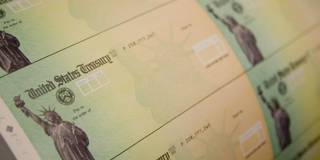While some inflationary pressures in recent years have come from increased demand, many others have resulted from supply disruptions that cannot be solved with interest-rate hikes. We must abandon the long-held assumption that central banks are the only institutions that can and should ensure price stability.
WASHINGTON, DC – The US Federal Reserve is not “in charge” of inflation, nor is any other central bank. That is the big lesson from the past few years, yet because so few experts are talking about it, macroeconomic misdiagnoses and flawed policy advice go unquestioned. Some commentators still blame the recent inflation in the United States entirely on the Fed or President Joe Biden’s American Rescue Plan, and one renowned expert even argued, a year ago, that unemployment will need to increase and stay elevated for half a decade to bring inflation back to the 2% target rate.

WASHINGTON, DC – The US Federal Reserve is not “in charge” of inflation, nor is any other central bank. That is the big lesson from the past few years, yet because so few experts are talking about it, macroeconomic misdiagnoses and flawed policy advice go unquestioned. Some commentators still blame the recent inflation in the United States entirely on the Fed or President Joe Biden’s American Rescue Plan, and one renowned expert even argued, a year ago, that unemployment will need to increase and stay elevated for half a decade to bring inflation back to the 2% target rate.